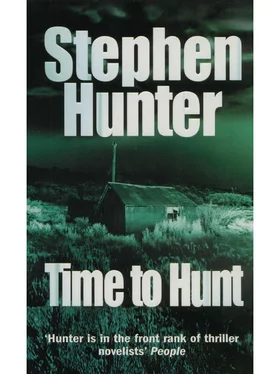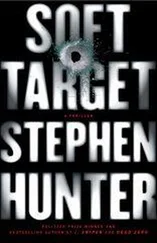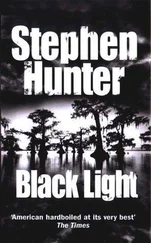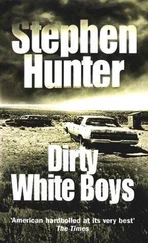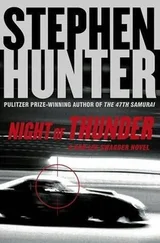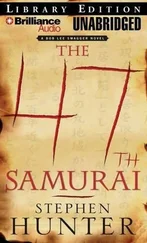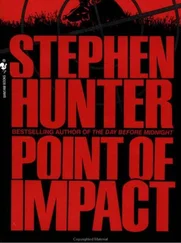Stephen Hunter - Time to Hunt
Здесь есть возможность читать онлайн «Stephen Hunter - Time to Hunt» весь текст электронной книги совершенно бесплатно (целиком полную версию без сокращений). В некоторых случаях можно слушать аудио, скачать через торрент в формате fb2 и присутствует краткое содержание. Жанр: Старинная литература, на английском языке. Описание произведения, (предисловие) а так же отзывы посетителей доступны на портале библиотеки ЛибКат.
- Название:Time to Hunt
- Автор:
- Жанр:
- Год:неизвестен
- ISBN:нет данных
- Рейтинг книги:3 / 5. Голосов: 1
-
Избранное:Добавить в избранное
- Отзывы:
-
Ваша оценка:
- 60
- 1
- 2
- 3
- 4
- 5
Time to Hunt: краткое содержание, описание и аннотация
Предлагаем к чтению аннотацию, описание, краткое содержание или предисловие (зависит от того, что написал сам автор книги «Time to Hunt»). Если вы не нашли необходимую информацию о книге — напишите в комментариях, мы постараемся отыскать её.
Time to Hunt — читать онлайн бесплатно полную книгу (весь текст) целиком
Ниже представлен текст книги, разбитый по страницам. Система сохранения места последней прочитанной страницы, позволяет с удобством читать онлайн бесплатно книгу «Time to Hunt», без необходимости каждый раз заново искать на чём Вы остановились. Поставьте закладку, и сможете в любой момент перейти на страницу, на которой закончили чтение.
Интервал:
Закладка:
“Can you weigh it?”
“Yeah, right, I’ll weigh it and then I’ll wax it, and then I’ll gift-wrap it while you quietly bleed to death. Just hold your horses, Bob.”
He dropped the bullet into a little porcelain tray, where it tinkled like a penny thrown into a blind man’s cup, then went back to Bob.
“Please weigh it,” said Bob.
“You ought to be committed,” the doctor said. He irrigated the wound again, poured in disinfectant and inserted a little sterile plastic tube, for drainage. Then he quickly and expertly sewed it up with coarse surgical thread. After finishing, he restitched with a finer thread. Then he bandaged the wound, wrapped an inflatable splint around it and blew hard until the splint held the leg stiff, nearly immobile. Then he loosened the Velcro on the tourniquet and tossed it aside.
“Pain?”
“Nothing,” said Bob.
“You’re lying. I felt you begin to tense five minutes ago.”
“Okay, it hurts a bit, yeah.”
Actually, it now hurt like hell. But he didn’t want another shot or anything that would drug him, flatten him, keep him woozy. He had other stuff to do.
“Okay,” said the doctor. “Tomorrow I’ll rebandage it and remove the tube. But it’ll relieve the pressure tonight. Now—”
“Please. I have to know. Weigh it. I have to know.”
Dr. Lopez rolled his eyes, took the porcelain cup to a table where a medical scale was sitting, and fiddled and twisted.
“All right,” said the doctor.
“Go on,” said Bob.
“It’s 167.8 grains.”
“Are you sure?”
“I’m very sure.”
“Christ!”
“What’s wrong?”
“This thing just got so twisted it don’t make no sense at all.”
He slept dreamlessly for the first time in weeks in one of Doc Lopez’s spare bedrooms; the pain woke him early, and the unbearable stiffness in the leg. The doctor redressed the wound, then replaced the inflatable splint.
“No major damage. You ought to be able to get around a little bit.”
He had some crutches lying around, and advised Bob to seek professional medical help as soon as possible. Bob could not walk or bathe, but he insisted on going to the airport, on the power of ibuprofen and will alone. White-faced and oily with sweat, he was pushed to the ten-fifteen plane in a wheelchair by a stewardess, and used the crutches to get aboard. He got to enter the plane early; it was like being important.
No one was seated next to him, as the flight was only half full. The plane took off, stabilized and eventually coffee was brought. He took four more ibus, washed them down with the coffee, then at last took out his grisly little treasure in its plasticine envelope.
Well, now, ain’t you a problem, brother, he thought, examining the little chunk of metal, mushroomed into the agony of impact, frozen forever in the configuration of the explosion it had caused against his hip bone.
One hundred sixty-eight grains.
Big problem. The only 168-grain bullet in the world in 1972 was American — the Sierra 168-grain MatchKing, the supreme .30-caliber target round then and, pretty much, now. He was expecting a 150-grain Soviet bullet, for the 7.62mm × 54, as fired in either a Dragunov or the old Mosin-Nagant sniper rifle.
No. This boy was working with an American handload, as the 168-grainers weren’t used on manufactured bullets until the services adopted the M852 in the early nineties. Nor was it the 173-grain match American bullet, loaded equally into the M72 .30-06 round or the M118 7.62 NATO round.
No. American handload, tailored, planned, its last wrinkle worked out. A serious professional shooter, at the extended ranges of his craft. That meant this was a total effort, even to somehow obtaining American components in RSVN to get the absolute maximum out of the system. Why?
He tried to think it out.
T. Solaratov has lost his Dragunov. The field-expedient choice would then be an American sniper rifle, presumably available in some degree within the NVA supply system; after all, half their stuff was captured.
Bob bet it was an M1-D, the sniper version of the old Ml Garand rifle that the GIs won World War II with.
The more he thought about it, the more sense it made, up to a point. Yes, that would explain the almost subconscious familiarity of the sound signature. In his time, he’d fired thousands of rounds with an M-1. It had been his first Marine rifle, a solid, chunky, robust, brilliantly engineered piece of work that would never let you down.
This is my rifle, this is my gun.
This is killing, this is for fun.
Every recruit had marched in his underwear around the squad bay some indeterminate number of hours, a ton of unloaded Ml on his shoulder, Parris Island’s sucking bogs out beyond the wire, his dick in his left hand, that primitive rhyme sounding in his ears under the guidance of a drill instructor who seemed like a God, only crueler and tougher and smarter.
Yeah, he thought, he uses a Garand rifle with a scope, he works out the load with the best possible components, he takes me down, he’s the hero.
Looking at the striations imprinted in the copper sheathing of the bullet by its explosive passage up the barrel that day, he guessed closer examination by experts would prove them to be the mark of a rifling system that held to ten twists per inch, not twelve, for that would prove the bullet was fired from a match grade Ml and not an M14. He saw the logic in that, too. It made sense to choose a .30-06 over a .308 because downrange the .30-06, with its longer cartridge case and higher powder capacity, would deliver more energy, particularly beyond a thousand yards. It really was a long-range cartridge, as so many deer had found out over the years; the .308 was a mere wannabe.
But here’s where he hit the wall.
If in fact he decided to go with the .30-06 cartridge, then why the hell wouldn’t he have used a Model 70T, a bolt gun? That was the Marine sniper rifle of the first five years of the war. There had to be plenty of those still around; hell, even Donny had come up with one of them in that one shot at Solaratov they’d had.
Why would the Russian use the less accurate, considerably more problematic semiauto instead of one of the most classic sniper rifles in the world? Carl Hitchcock, the great Marine sniper of 1967, with his ninety-two kills, he’d used a 70T, with a sportsman’s stock and an 8X Unertl externally adjusted scope. That would be the rifle to use. What the hell was this Russian bird up to?
Could it be: no Model 70s available?
Well, he could check out combat losses through friends in the Pentagon, but it seemed impossible that the Russian wouldn’t be able to pick up a Model 70. He could probably have gotten one of Bob’s own Model 700 Remingtons if he’d wanted it.
What was there about the M1 that made it mandatory for the Russian’s selection?
It was indeed a very accurate rifle. Maybe he’d wanted the semiauto capacity to bracket the target, to put three or four shots into the area fast, in hopes that one would hit.
Nah. Not at that range. Each shot had to be precise.
The problem with the Garand as a sniper rifle was it was at its best with national match iron sights. It ruled in service rifle competition in which telescopic sights were not permissible. But the weapon became difficult when a scope was added, because its straight-down topside en bloc loading and straight-up ejection made it impossible to mount the scope over the axis of the bore. Instead, through a complicated system never really satisfactory, the Ml had worn a parallel scope, one mounted a little to the left of the action. That meant at a given range, the scope was intersecting the target but it was not on the same axis as the bore, which made rapid computation very difficult, particularly when the target was not exactly zeroed, or moved, or some such.
Читать дальшеИнтервал:
Закладка:
Похожие книги на «Time to Hunt»
Представляем Вашему вниманию похожие книги на «Time to Hunt» списком для выбора. Мы отобрали схожую по названию и смыслу литературу в надежде предоставить читателям больше вариантов отыскать новые, интересные, ещё непрочитанные произведения.
Обсуждение, отзывы о книге «Time to Hunt» и просто собственные мнения читателей. Оставьте ваши комментарии, напишите, что Вы думаете о произведении, его смысле или главных героях. Укажите что конкретно понравилось, а что нет, и почему Вы так считаете.
